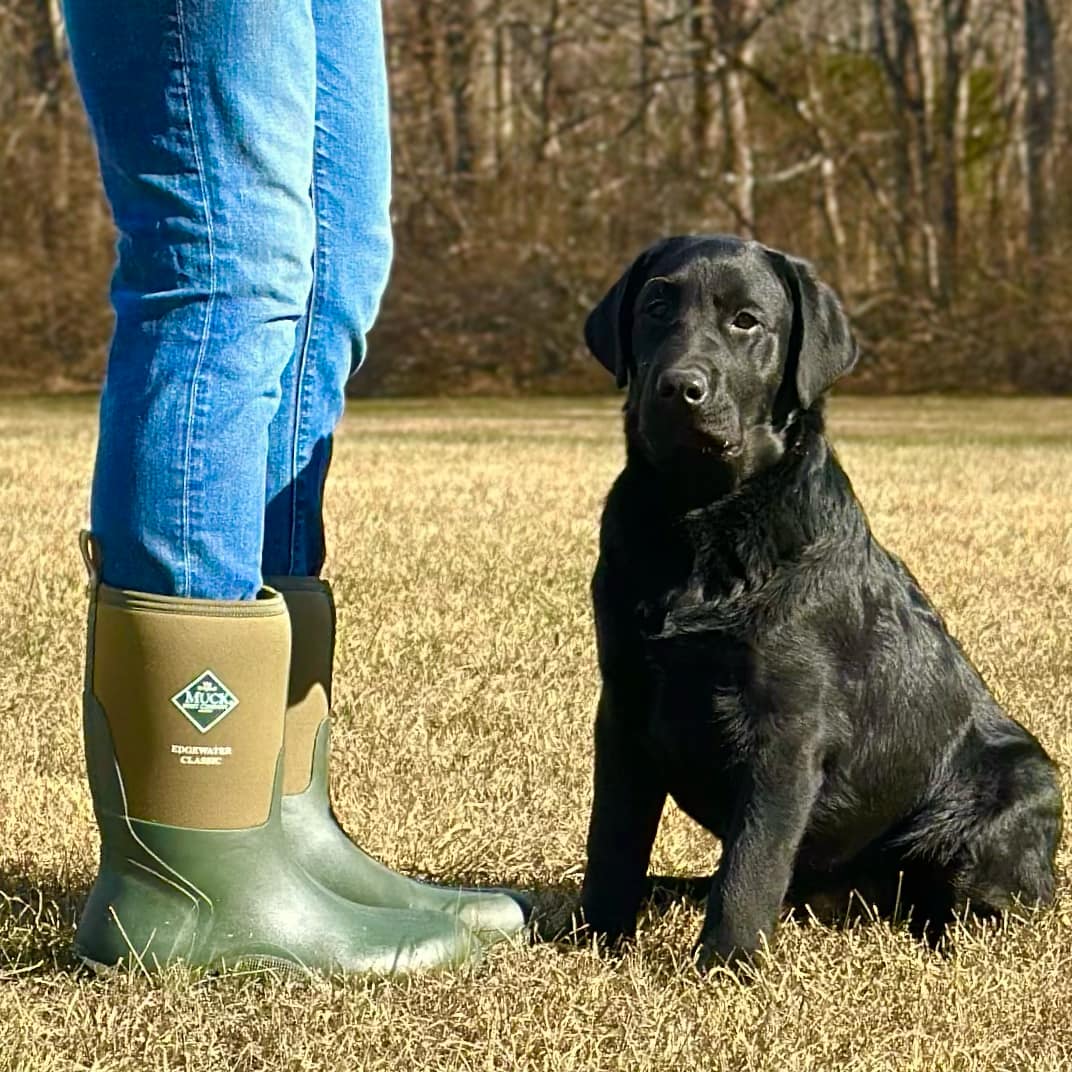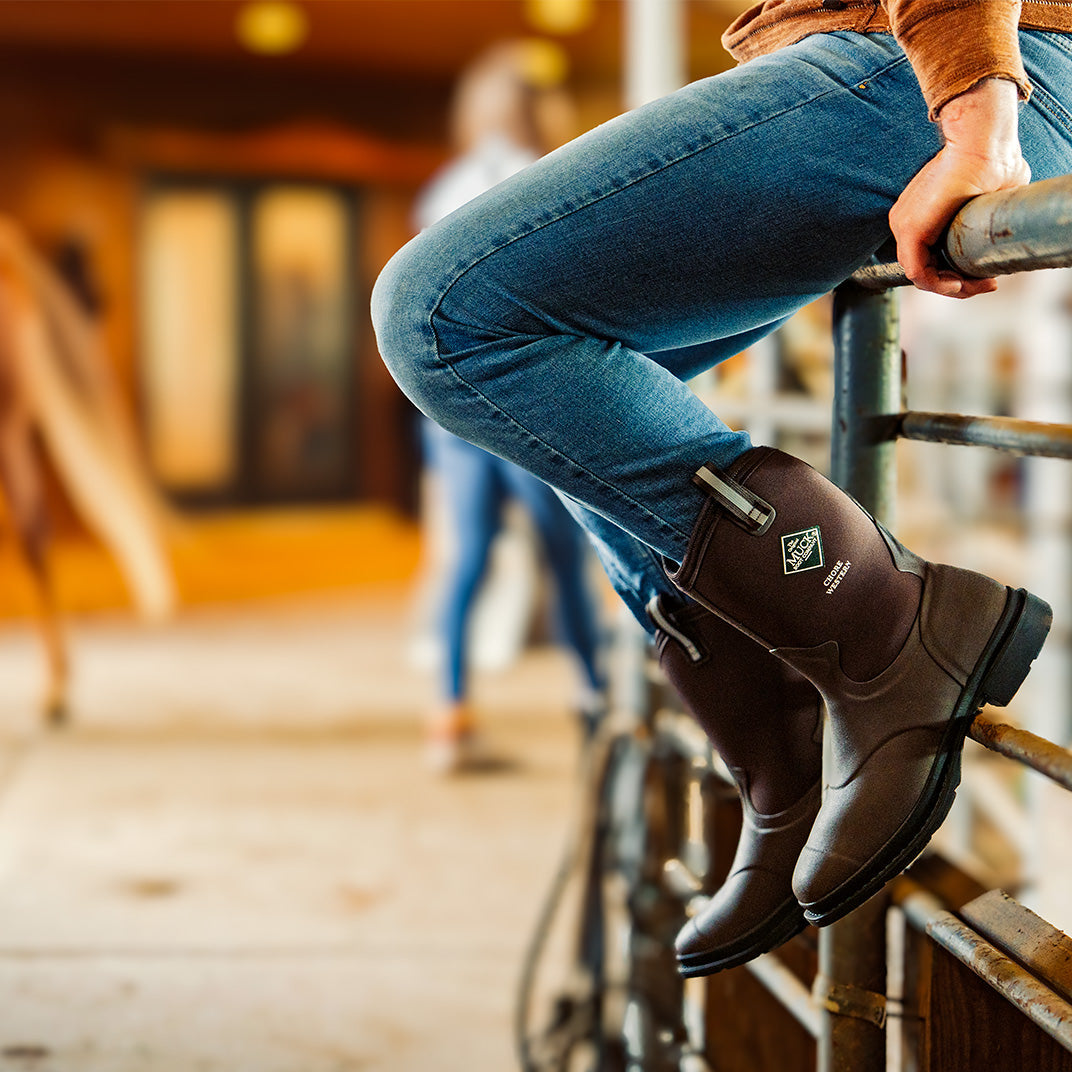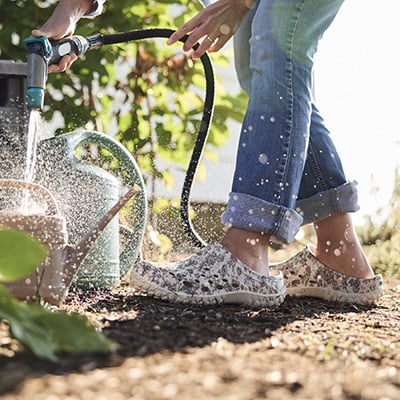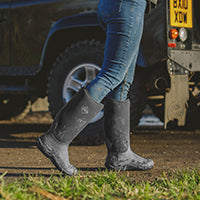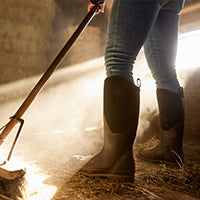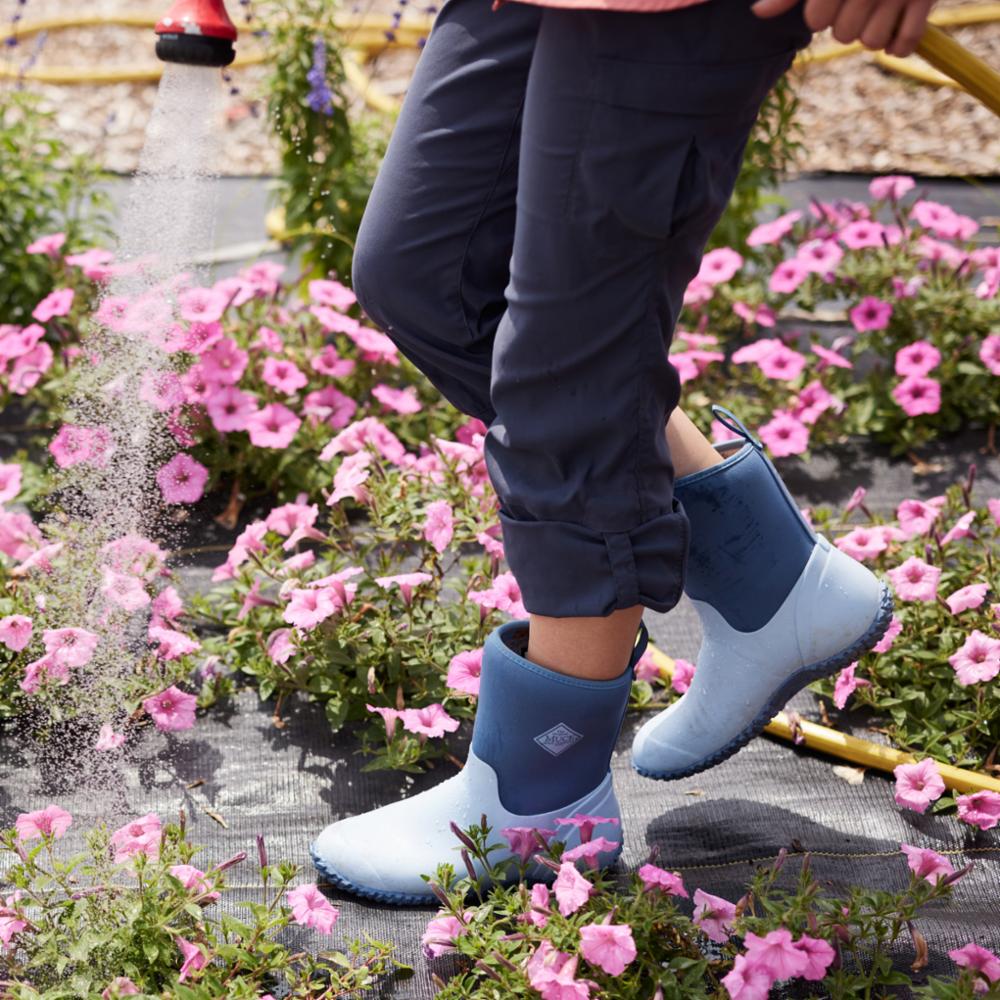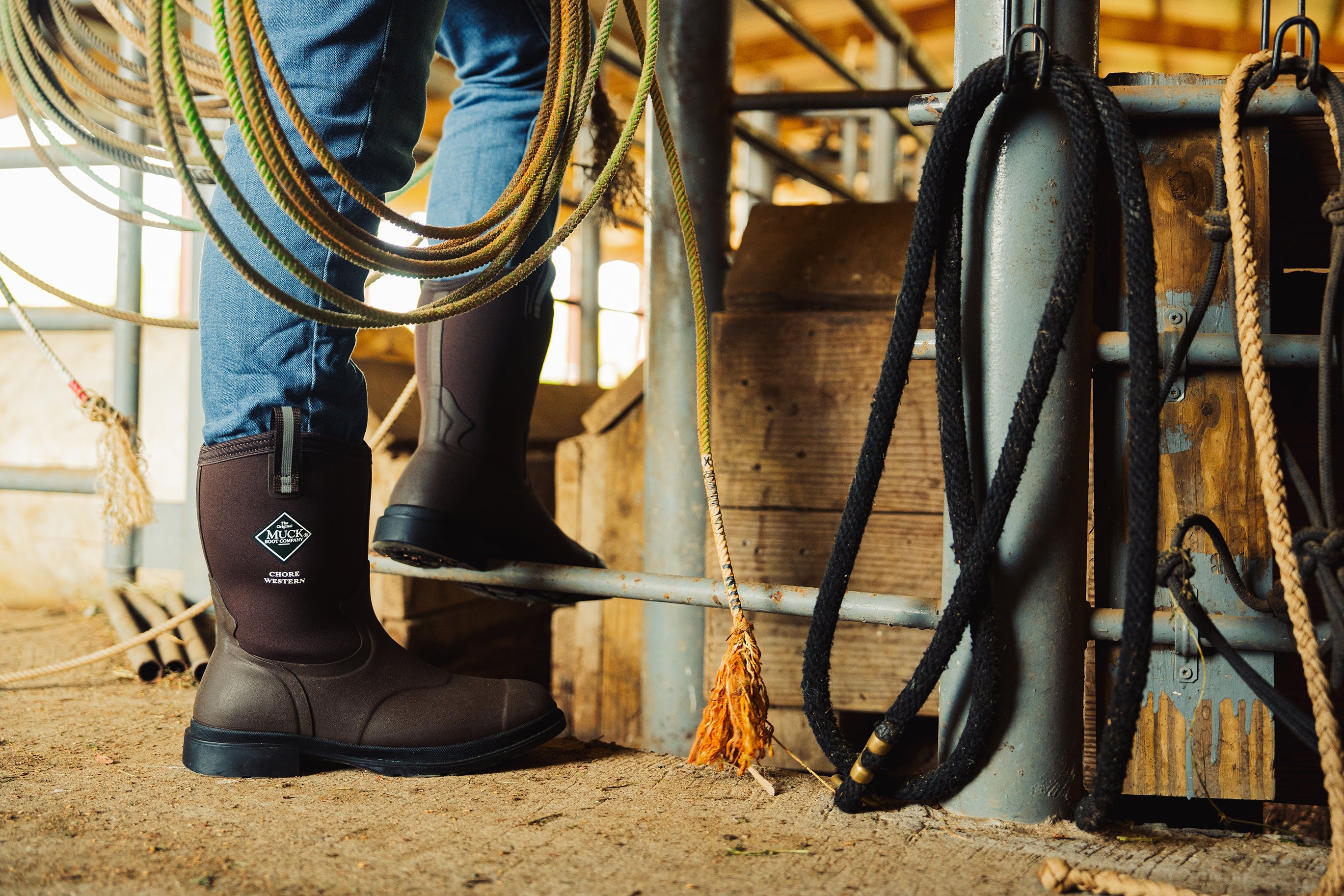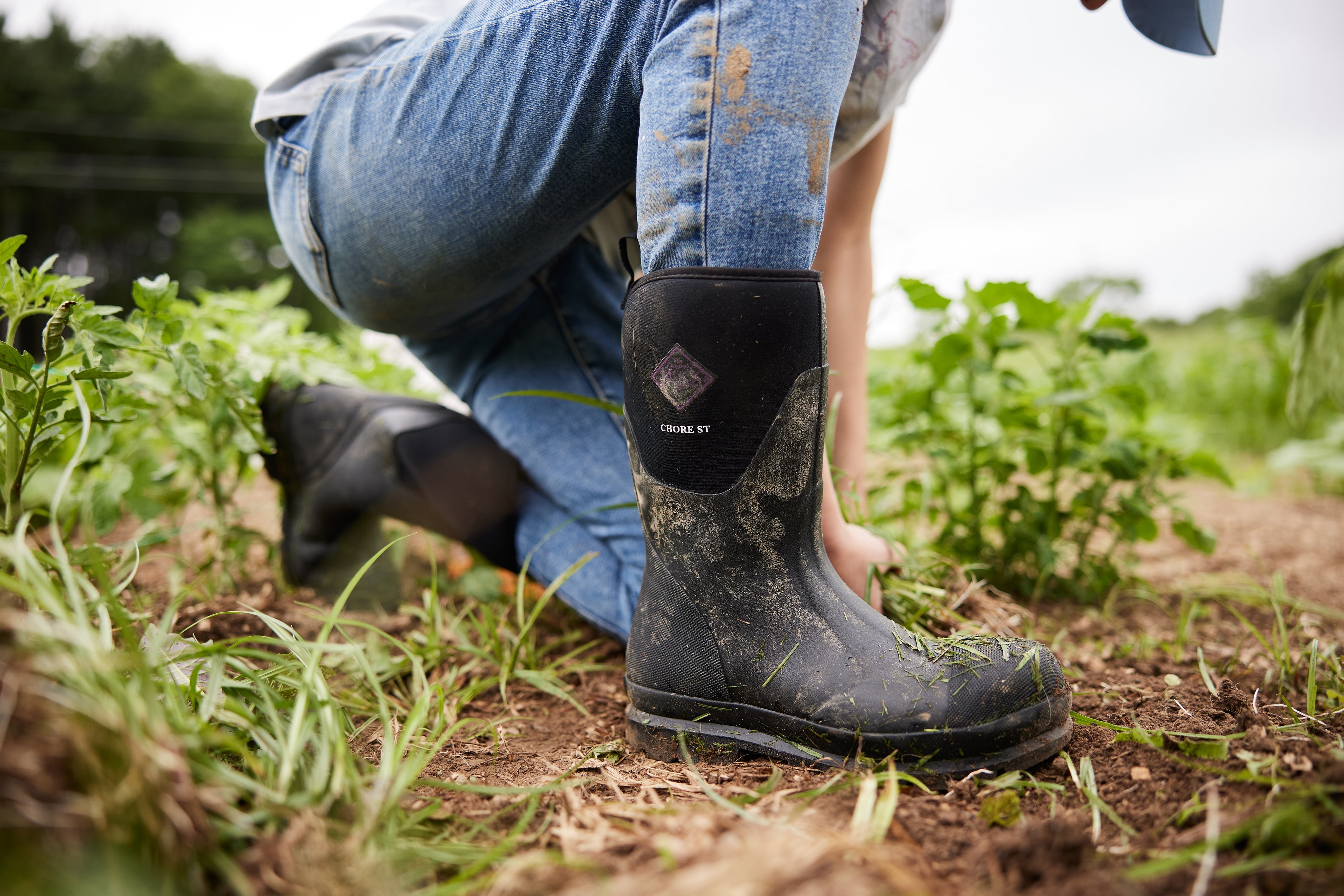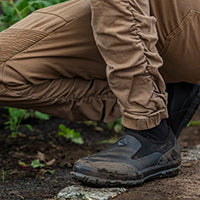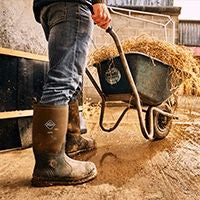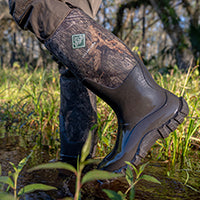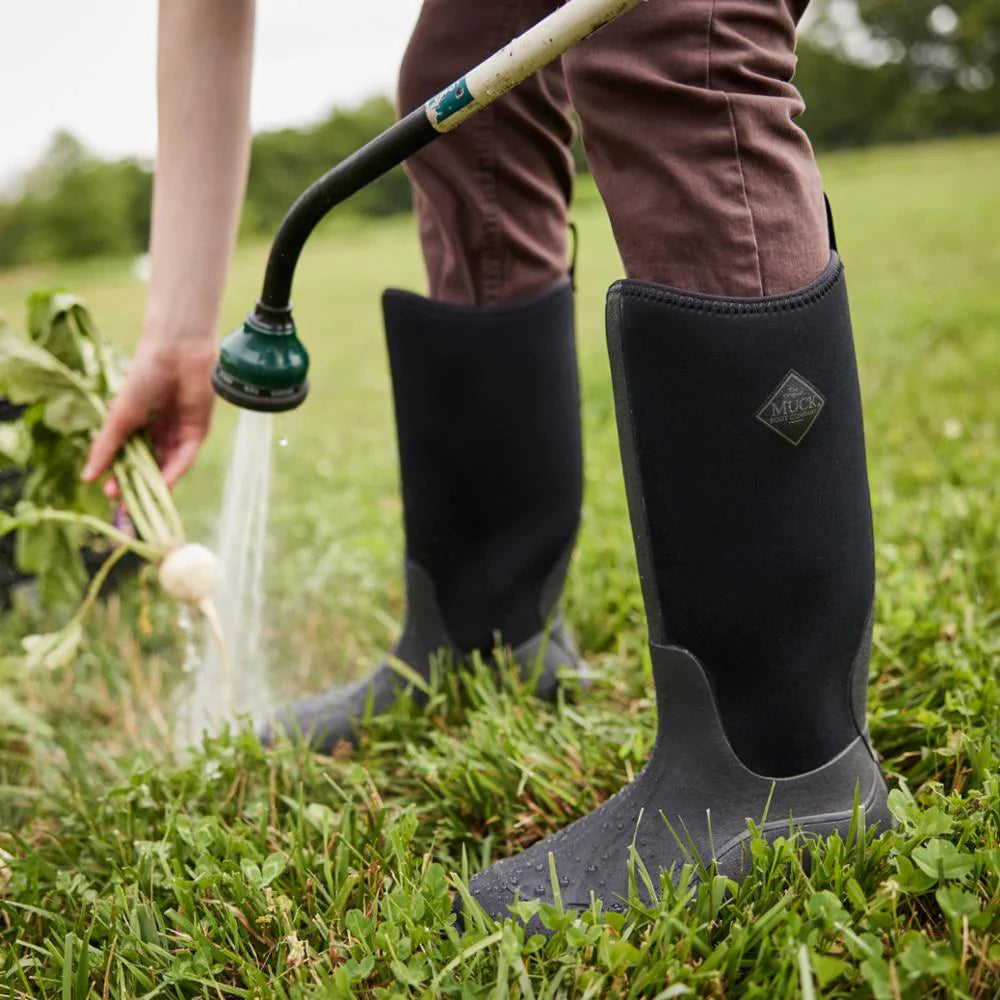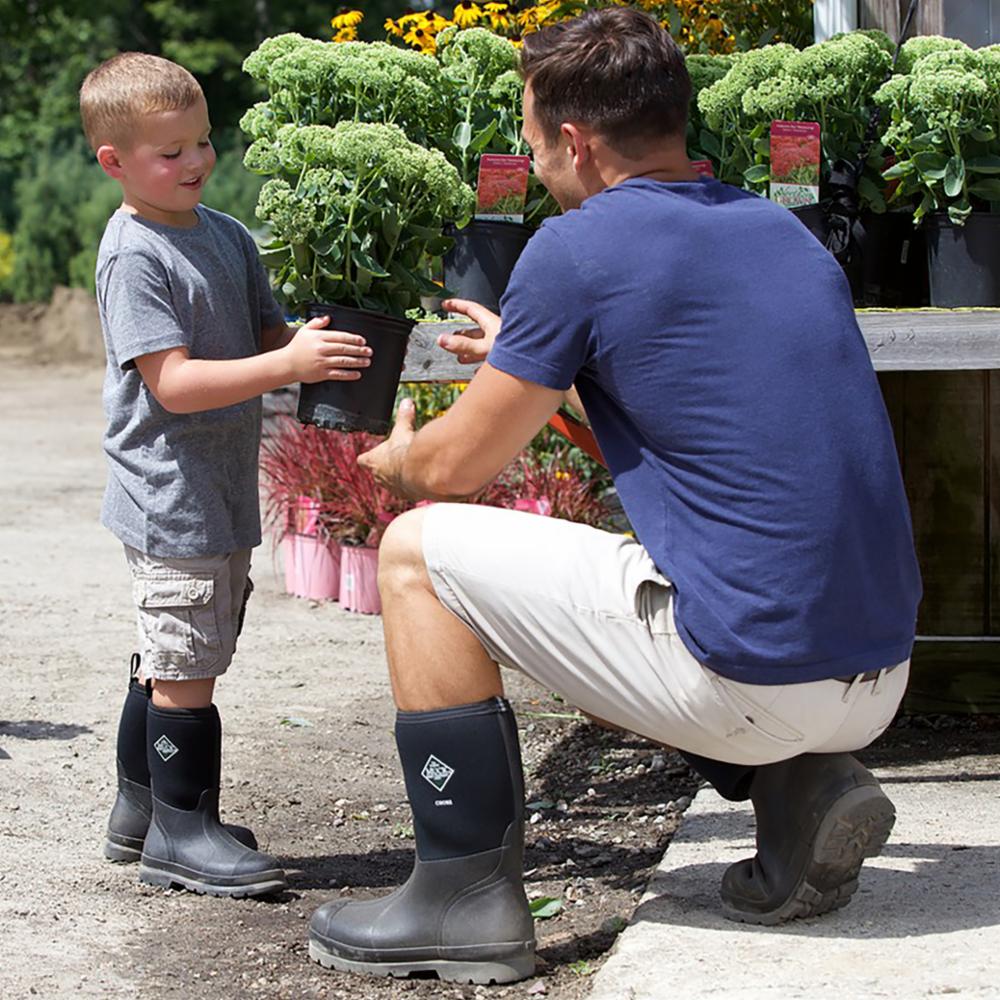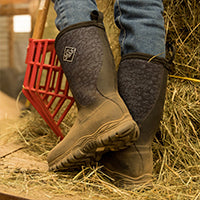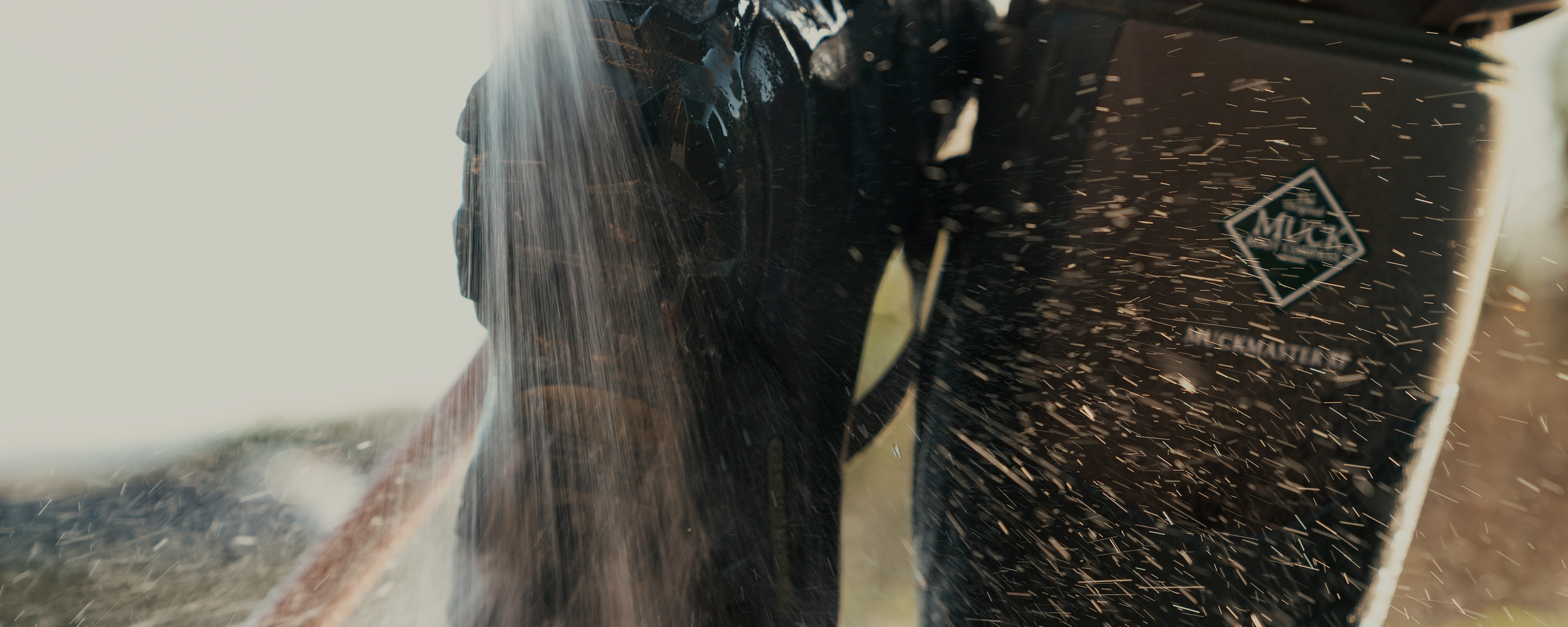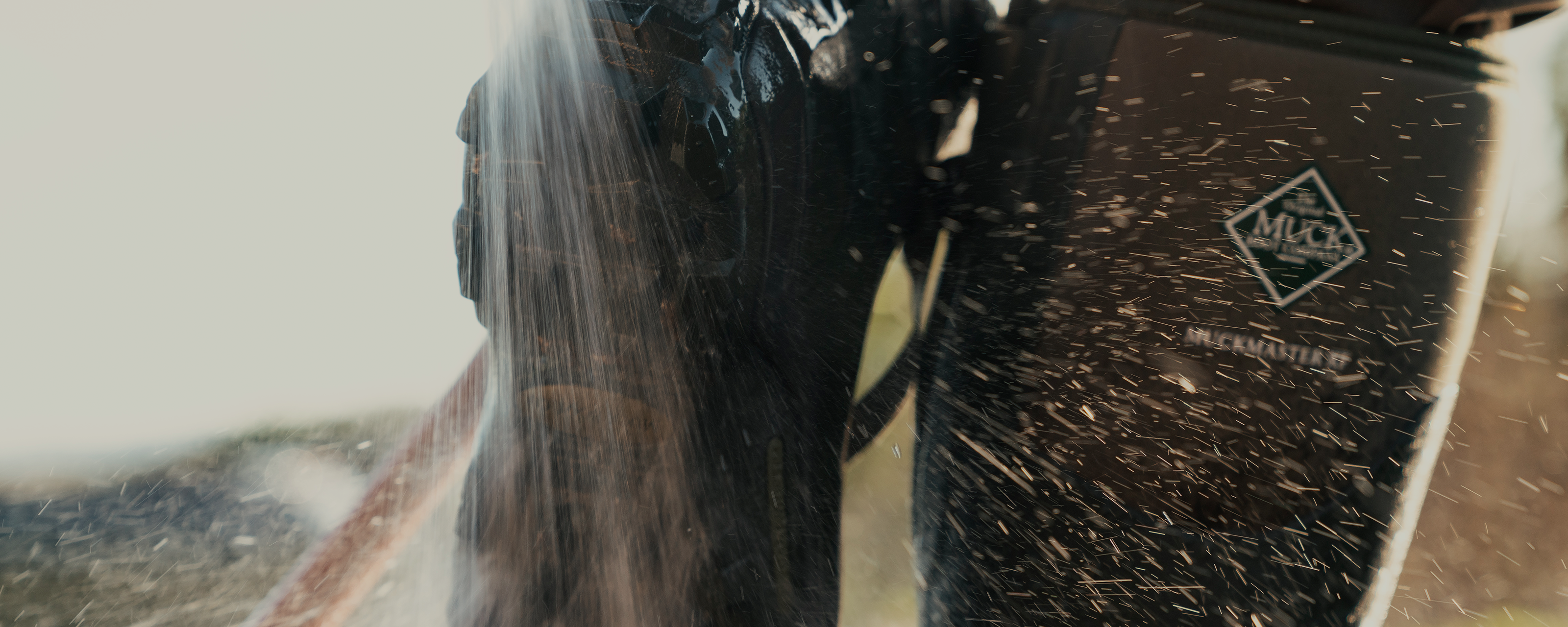YOUR NEW MUCK BOOTS ARE CONSTRUCTED WITH HIGH-GRADE MATERIALS AND NATURAL RUBBER. FOLLOW OUR CARE GUIDE TO HELP PROLONG THE LIFE OF YOUR WELLINGTON BOOTS
HOW TO CLEAN & CARE FOR YOUR WELLINGTON BOOTS
Following these steps when cleaning your boots will keep them fresh and help preserve the longevity of your wellies for all your upcoming mucky adventure!.
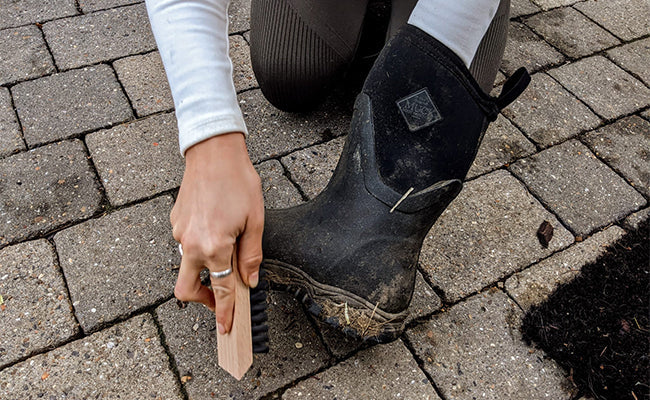
PREMIÈRE ÉTAPE
Enlevez la saleté excessive comme la boue et les débris
Pendant que vos bottes sont encore humides, essuyez l’excès de boue à l’aide d’un chiffon. Si la boue est trop sèche, utilisez une brosse douce afin de la retirer.
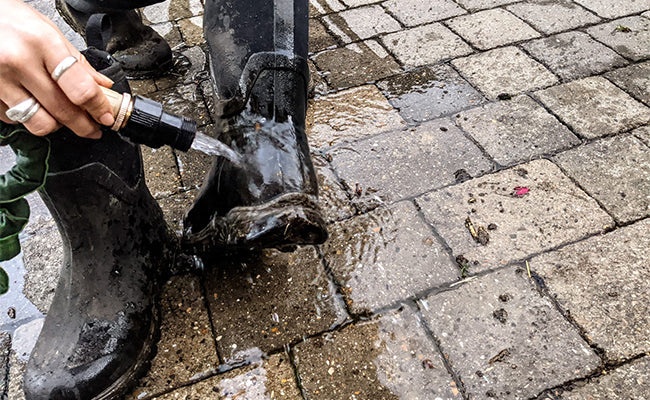
DEUXIÈME ÉTAPE
Nettoyez vos bottes à l'eau tiède
Enlevez toute trace de boue avec un chiffon et de l'eau tiède. Cette étape permet également d'éliminer les contaminants qui peuvent se retrouver par inadvertance sur vos bottes, comme les produits chimiques ou les déjections animales, et qui peuvent endommager les matériaux
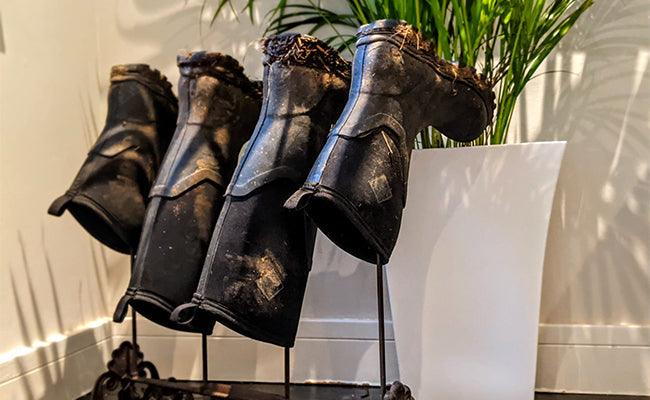
TROISIÈME ÉTAPE
Laissez vos bottes sécher naturellement à la température ambiante
Laissez vos bottes sécher naturellement à l'abri de la chaleur artificielle. Il est peut-être tentant de les laisser près d'un appareil de chauffage, mais la chaleur artificielle peut endommager les bottes.
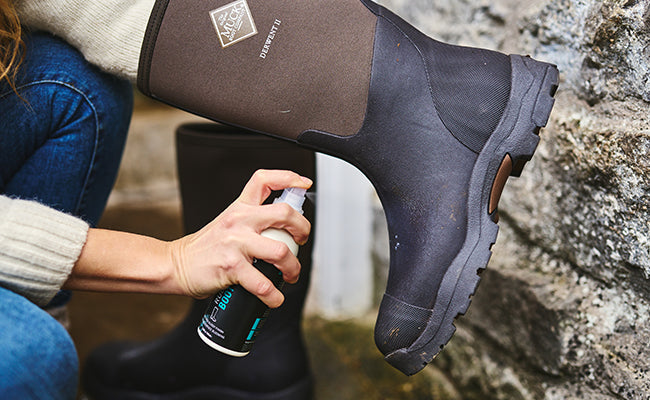
QUATRIÈME ÉTAPE
Nourrissez vos bottes
Nourrir la partie supérieure de vos bottes permet de les garder souples, de prolonger leur durée de vie et de réduire le risque de fissures. Il existe de nombreux exemples de produits d'entretien pour bottes en caoutchouc sur le marché.
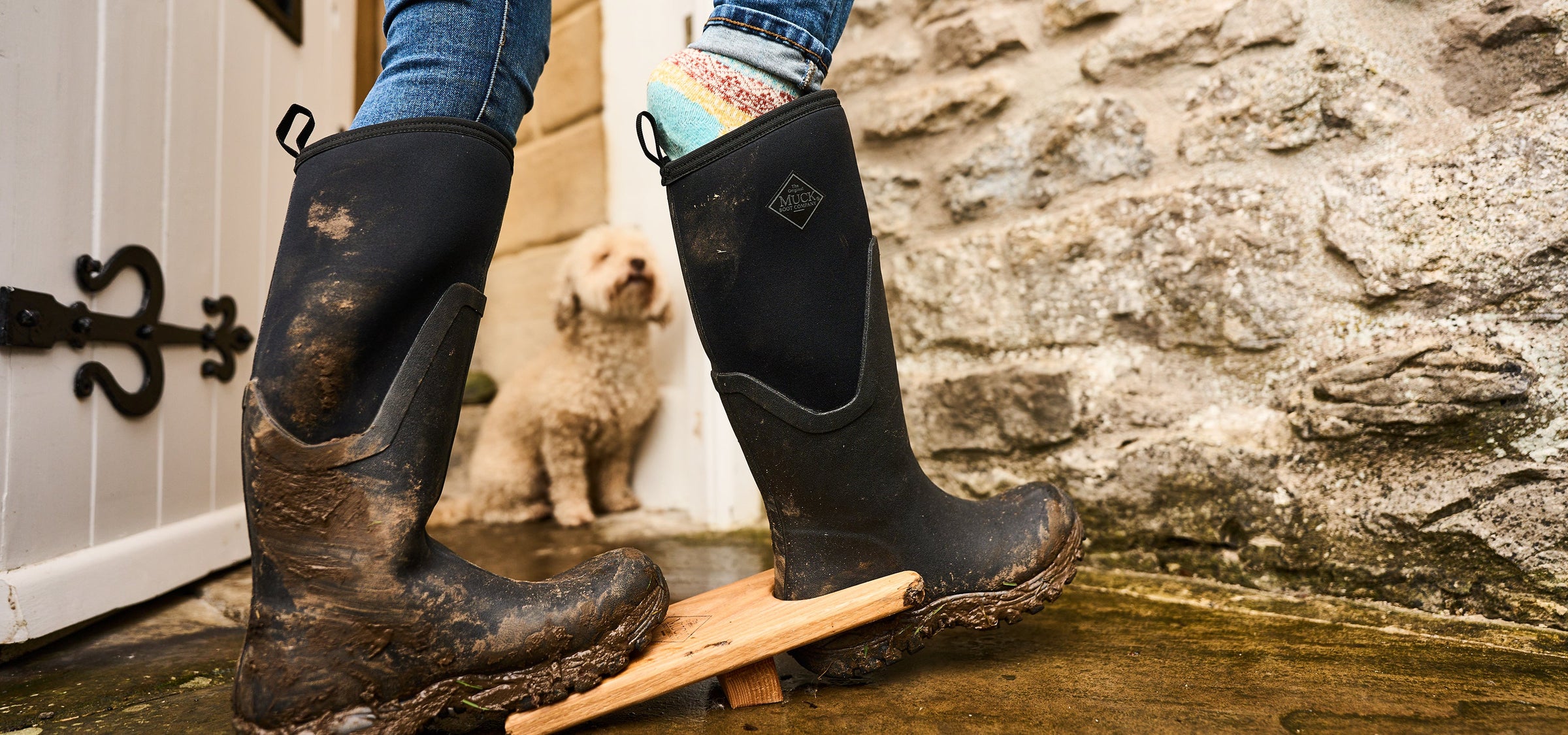
BEST PRACTICE TO PROLONG THE LIFE OF YOUR MUCK® BOOTS.
BEST PRACTICE TO PROLONG THE LIFE OF YOUR MUCK® BOOTS.
Take care pulling your boots on to ensure the boots shaft is correctly extended. Our neoprene upper can be a snug fit and not pulling the boots to their full height, or over stuffing with trouser leg can cause excessive creasing where the ankle articulates.
TAKING OFF WELLINGTON BOOTS
Using a suitable boot jack is the preferred method of removal. There are many examples of boot jacks on the market including our own. Avoid using the opposite foot as a lever on the heel of the boot or a convenient step, stair or rock as this can damage the boot and can cause excessive pressure on the boot heel and sole leading to damage.
STORING WELLIES
Avoid storing your boots in direct sunlight, near to any artificial heat or in sub-zero temperatures, as this can cause the rubber to become brittle, deteriorate and crack. Preferably store your boots upright to avoid creasing or folding – some crumpled newspaper will help.
LEATHER & FABRIC UPPERS
For leather uppers use a suitable leather care product. Once dry, any woven/fabric upper panels can be gently brushed with a soft brush to remove any remaining mud.
*Our boots are great, and a little TLC should see them lasting and performing to the highest standards in the toughest conditions. However, they are conceived as a work/walk inspired product. Particularly our tall boots are not designed for driving or horse riding unless specifically stated. Inappropriate use can shorten their effective lifespan.


